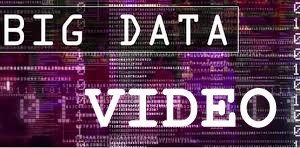
Understanding the Importance of Metadata in Physical Security, Surveillance and Retail Intelligence Applications.
In our last post, we discussed what Meta Data is: “Data that provides information about other data.” We touched briefly on why having that kind of data could be important for the Physical Security and Surveillance industry. Today we will delve a little deeper.
Metadata can be used to improve the efficiency of physical security, and it can also allow security departments to add considerable value to other areas of an organization. In order to see how video analytics and metadata affect video surveillance, it is important to understand some of the specific data points which can be captured and assessed through Intelligent Video Management or IVM.
Network video is superior to analog video in many ways. Machine understanding of video – understanding video as video metadata ? enhances video management in three key areas, search, alarms and reporting. But what criteria are being captured which can then be searched or analysed? To answer this, it is simplest to break the scenario down to its basic components.
Video is captured and stored as individual frames. When you display these frames in a sequence at the specified rate you see a moving picture, right? We?ve all been to the movies and we can easily understand this concept.
Objects exist within each of these frames. Perhaps they are people, cars, items on a store shelf, etc? These objects interact with their environment. Again, just like at the movies.
What metadata does is add context to each of these frames and the objects contained therein. For example, depending on the software you?re using, metadata can allow you to capture relevant data about each frame in order to answer questions such as:
When was the frame captured?
Was the camera obstructed by an object?
How much of the frame was in motion?
Was the camera moved?
Without metadata and intelligent video management, you would need to be watching hours of recorded footage in order to answer those questions. With metadata, the information is stored and searchable. This alone can save an organization considerable time an improve the efficiency of security departments? but when you consider the potential variables that a constant flow of objects across the screen adds to the equation, the case for metadata gets even better. Using metadata, you can track:
Each individual object by a unique identification number
The size of an object
How long an object has been on screen
What an object is (i.e. Car, person, train, etc?)
If an object is moving or not
How much of the screen the object is taking up
Where an object is on the frame
License plate numbers of cars that pass across a frame
In order to make use of this metadata, virtual fences can be setup within a frame to help understand the interactions objects have with their environment. This enables alerts and reports about objects (or objects of a particular class) entering, loitering or exiting a particular area. With metadata we can track and understand object behaviours like never before. You can detect complex activity by combining multiple sub-events with specific order and timing.
Author: Justin Schorn, VP of Product Management
The second post in a series:

